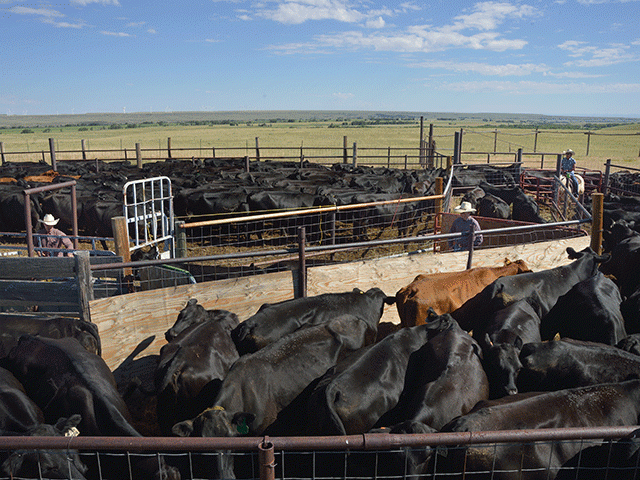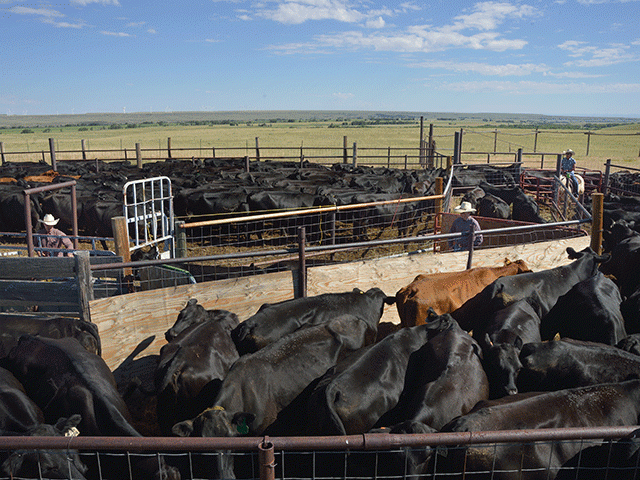Sort & Cull
Eighth Wonder of the World and Cash Cattle Sales
From sitting down and determining what your retirement strategy will be, to a grueling weed-out econ class or to gambling a few bucks in the market here and there, you most likely value the importance of compound interest or are familiar with its merit from some lesson in life. Albert Einstein has been quoted saying, "Compound interest is the eighth wonder of the world. He who understands it, earns it; he who doesn't, pays it."
The definition of compound interest is, "The interest on a loan or deposit that accrues on both the initial principal and the accumulated interest from previous periods." In layman's terms, compound interest is when you earn interest on both the money you've saved and the interest you earn.
What stings the most about Einstein's quote is the last part: "He who understands it, earns it; he who doesn't, pays it." It may seem like a simple conclusion to jump to -- for heaven's sake, who wouldn't want to utilize compound interest? There are also compounding factors in the cash cattle market that we underestimate and ultimately end up paying for.
For instance, let's examine last week's cash cattle market. Southern live deals ranged from $138 to mostly $140, generally steady with the prior week's weighted averages. Northern dressed trade had a full range of $222 to $227, mostly $224, $2 higher than the previous week's weighted average for Nebraska. But the displeasing component of last week's trade is that of the Northern cattle that sold for a premium to last week's average (some trading $4 higher), most of them were bought with time and committed for the week of Feb. 21.
In the weeks ahead, it's likely that packers continue to use this strategy in the market -- buying cattle with time to protect themselves from having to buy too many cattle in the spot cash cattle market. Doing so will weaken the cash cattle market's ability to rally and alleviate their fear of having to pay higher cash prices.
P[L1] D[0x0] M[300x250] OOP[F] ADUNIT[] T[]
This is where the component of compound interest comes into play. The idea of selling cattle for a premium to the spot market sounds like a no-brainer. Money is money, right? And more money is better, right? But if today's premium shorts tomorrow's market, how much of a premium was it really?
When cattlemen sell cattle with time in the cash cattle market, it hinders the cash cattle market's ability to rally in the upcoming weeks. Sure, feedlots may be able to get a small premium on the current market, which benefits them today. But when their next pen of cattle becomes ready to market and they begin asking the same price for this pen of cattle, which ends up being the same price they sold the last pen for (because, since then, the cash cattle market hasn't had enough interest nor support to rally), can you consider that premium still worth it?
The alternative to selling cattle with time is obviously selling cattle for the nearby delivery. If, week after week, the market saw 90%-100% of its cattle sell in the one- to 14-day delivery window, feedlots would be able to sit in the driver's seat of the cash cattle market more often, instead of being price takers at the mercy of packers' bids. And let's remember, in the late 1990s, it was still customary for packers to pick up the cattle they bought in a week's time -- seven days. Now packers have options left and right -- the nearby delivery, which is one to 14 days, or the deferred delivery, which is the following 15 to 30 days.
When feedlots sell their cattle with time, it can come as a negative compounding problem for themselves and for the market as a whole. First, they accept a small premium on the cattle for a deferred delivery, but was that premium enough to justify the cost of feed between now and the specified delivery date? With there only being a $5.21 difference between choice and select cuts (as of Feb. 14), it's difficult to justify feeding cattle for a longer duration when corn is around $6.30 per bushel.
Problem No. 1: Premium doesn't offset feed expense.
Second, when cattle are sold with time, the cash cattle market has at least two weeks (sometimes more, depending on if cattle in the previous weeks had sold with time or not) where it will struggle to rally. When packers have cattle committed, their need to support the cash cattle market wanes which also hinders prices.
Problem No. 2: Selling cattle with time hurts price discovery in the weeks ahead.
And last, when cattle are sold with time, fewer cattle are sold in the cash market, which equates to fewer marketing opportunities for cash-selling feedlots.
Problem No. 3: Selling cattle with time negatively affects volumes of cash cattle traded.
I understand that, as an owner, when it appears that risk is looming and that the cash cattle market may dip, selling cattle with time may be enticing. But when you stack the pros and cons up against one another, nine times out of 10, this decision gives packers more control over the market and negatively affects the cash cattle sector. Compound interest can be a beautiful tool, but it can also be a costly tool if problems are allowed to compound.
ShayLe Stewart can be reached at ShayLe.Stewart@dtn.com
(c) Copyright 2022 DTN, LLC. All rights reserved.






Comments
To comment, please Log In or Join our Community .